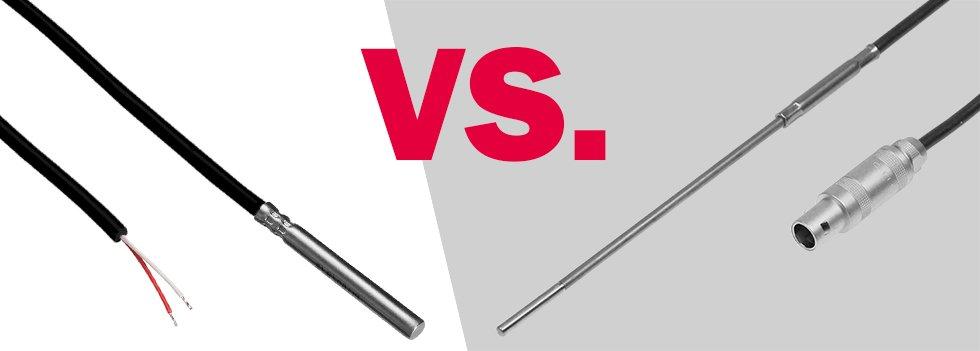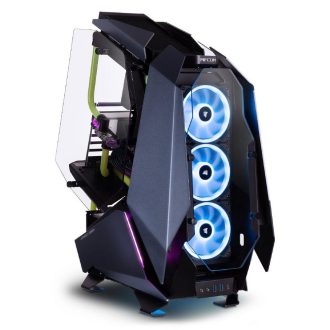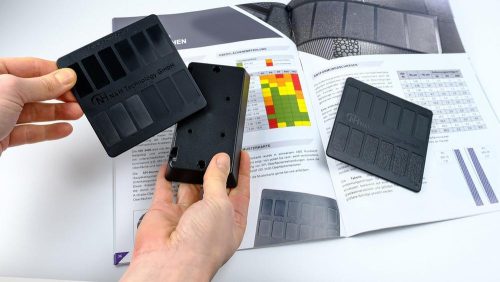
Cable probe or resistance thermometer? Which probe makes sense in which situation?
The classic cable probe
Simply constructed cable temperature probes without bringing potting compund and heat-conductive paste as well as certain insulation elements in, are quite simple to manufacture. They consist of a cable, at whose end a sensor element (e.g. platinum sensor) is connected. The entire measuring insert (this is the name given to the sensor incl. insulation and possible shrink tubing installed on the cable) is inserted into a protective sleeve that protects it against environmental influences. With the help of the already mentioned casting compounds, a high IP protection class (up to IP68) can also be achieved with these probes. The use of heat-conductive paste also ensures that quick response times are achieved. The fixation by means of pinching or rolling ensures a secure connection between the sleeve and the cable. Depending on the raw material prices and the structure of the measuring insert, the classic cable probe can be a very cost effective way of measuring temperature. A small number of parts and work steps also ensures a low price in production.
However, depending on the requirements, this simple execution of temperature measurement also reaches its limits. Although the cable probes can be cast waterproof up to a maximum permanent temperature of approx. 350 °C, there is still the possibility that water vapor could get inside the probe. Particularly when using glass fiber lines, which are used at high ambient temperatures (>260 °C), moisture can penetrate the measuring insert and impair its function.
Reproducibility is also only possible to a limited extent. The location of the sensor varies minimally from probe to probe, which can lead to slight deviations in the measured values.
Last but not least, the installation situation often requires a structural adjustment of the temperature probe. The protective sleeve of cable probes is rigid and therefore offers only a few options for flexibility. More space is required, especially for probes with a thread, so-called screw-in probes. But this is, depending on the installation space. not available
In such cases, a sheath resistance thermometer can be used.
The mineral insulated resistance thermometer
Similar to the structure of a mineral insulated thermocouple, the mineral insulated resistance thermometer consists of two conducters, but not made of thermocouple material but made out of copper. These are enclosed by magnesium oxide and a stainless steel sleeve (e.g. Inconel 600). In the measuring technology industry, this is known as a sheathed slotted line. It is shortened to the required length and the sensor element (e.g. Pt1000) is welded to the exposed copper wires.
Using this process, it is possible to always put the sensor elements in the same position, even if 2 sensor elements are installed in a probe, which must be at the same height and radial position. Deviations when changing a probe are therefore also excluded.
Another stainless steel sleeve encloses the sensor elements and is welded to the end of the sheathed slotted line. Now the sensor elements are embedded in tightly compressed magnesium oxide. At the end the probe is closed with a pastille.
Thanks to the magnesium oxide, the sensors are cast vapor-tight and, thanks to their structure, can withstand high pressures and temperatures of up to 600 °C without any problems. Due to the robust construction, the probes are shockproof and durable. Another big benefit: The sheathed slotted line can be bent and can therefore be individually adapted to the application and construction.
All these advantages and properties mean that significantly more and higher quality basic materials are required for a mineral insulated resistance thermometer. The manufacturing processes are also more complex, which means that the price is higher than that of a simple cable probe. In comparison to a high-quality cable probe (with R glass fibre cable), there is almost no difference in price.
The selection of the right probe therefore depends on various factors in the application and the demands on the probe or the accuracy of the measured value. We are happy to assist you with advice and the design of the appropriate sensor.
B+B Thermo-Technik GmbH stands for innovative measurement technology for the past 35 years. Located in Donaueschingen we are your partner for the measurement and automation technology. With our know-how since 1984 we are your specialist for all areas in the temperature-, humidity and pressure measurement.
B+B Thermo-Technik GmbH
Heinrich-Hertz-Str. 4
78166 Donaueschingen
Telefon: +49 (771) 8316-0
Telefax: +49 (771) 8316-50
http://www.bb-sensors.com/
Marketing
Telefon: +49 (771) 831649
E-Mail: strack@bb-sensors.com
![]()



